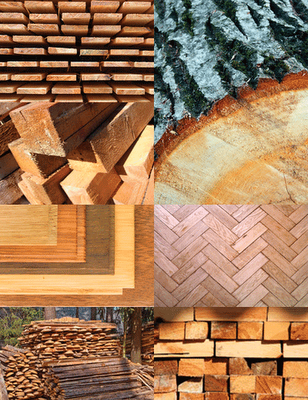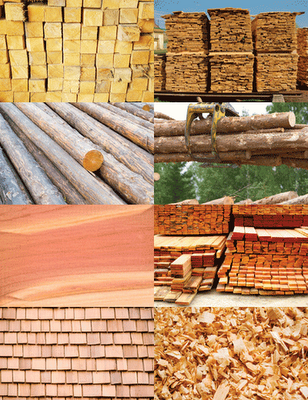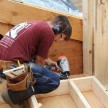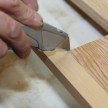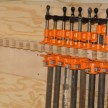Wood For Woodworking
The following guest post was written by Marcy Tate. Marcy is a home improvement blogger at fixyourhome.wordpress.comblog and has been working with carpenters for over a decade.
The Different Types of Wood for Woodworking
Before beginning woodworking projects, the first step is to pick the right wood for the craft. Start by researching the different types of wood in order to select the right one for your project. When selecting a wood, consider the wood’s:
• Strength
• Hardness
• Grain characteristics
• Cost
• Stability
• Weight
• Color
• Durability
• Availability
If you are new to woodworking, the many different types of wood may seem confusing and overwhelming. Below is a simple guide to the different types of wood to help you get started with your project on the right foot.
Softwood, Hardwood and Manufactured Panels
There are three types of wood used in carpentry: Softwood, hardwood and manufactured panels.
Softwoods
Softwoods come from evergreen trees. They are great for beginner woodworkers because they are soft and easy to work with. They are great for intricately carved projects. Softwoods are more susceptible to marks and dings, but this can often result in an appealing weathered quality.
Cedar
• Reddish color
• Aromatically sweet
• Uniform texture
• Resists decay
• Used for: chests, closet linings, roof shingles and outdoor projects such as decks and fences
Fir
• Easy to work with
• Finishes well
• Can decay easily with excessive moisture
• Used for: trim, doors, furniture and sandboxes
Hemlock
• Lightweight
• Similar qualities to fir
• Used for: sub-flooring, planks, crates and small woodworking projects
Pine
• Uniform texture
• Easy to work with
• Finishes well
• Used for: house construction, paneling and trim
Redwood
• Lightweight
• Durable
• Easy to work with
• Resists decay
• Used for: siding, fencing and paneling
Spruce
• Strong and hard
• Finishes well
• Moderate shrinkage
• Lightweight
• Used for: crates, boxes and general millwork
Hardwoods
Hardwoods come from leaf-shedding trees. They are used for making fine furniture, as they offer greater strength and stability. Hardwood has a higher density than softwood and is therefore harder.
Cherry
• Ages well
• Resists warping and shrinking
• Used for: cabinets and furniture handles
Mahogany
• Reddish brown
• Durable
• Resists swelling and shrinking
• Used for: cabinets, decks and fine furniture
Maple
• Strong and hard
• Fine textured
• Used for: flooring, bookcases and other furniture
Oak
• Extremely strong
• Durable
• Resists moisture absorption
• Used for: trim work, desks, flooring, bookcases and other furniture
Rosewood
• Fragrant
• Hard to work with
• Needs a high polish
• Used for: musical instruments, flooring and cabinetry
Teak
• Hard and durable
• Resists rot
• Used for: doors, window framing, flooring and general construction
Walnut
• Dark brown
• Strong
• Easy to work with
• Finishes well
• Used for: various carpentry projects from wall paneling to furniture
Manufactured Panels
Manufactured panels, such as plywood, are made from thin laminates of wood glued together. Manufactured wood is used widely in the building industry. There are several varieties of plywood, including interior and exterior plywood.
Your woodworking project will have a greater chance at success if you select your wood carefully. Plan ahead and make sure your local lumberyard has the type of wood you need in stock.



